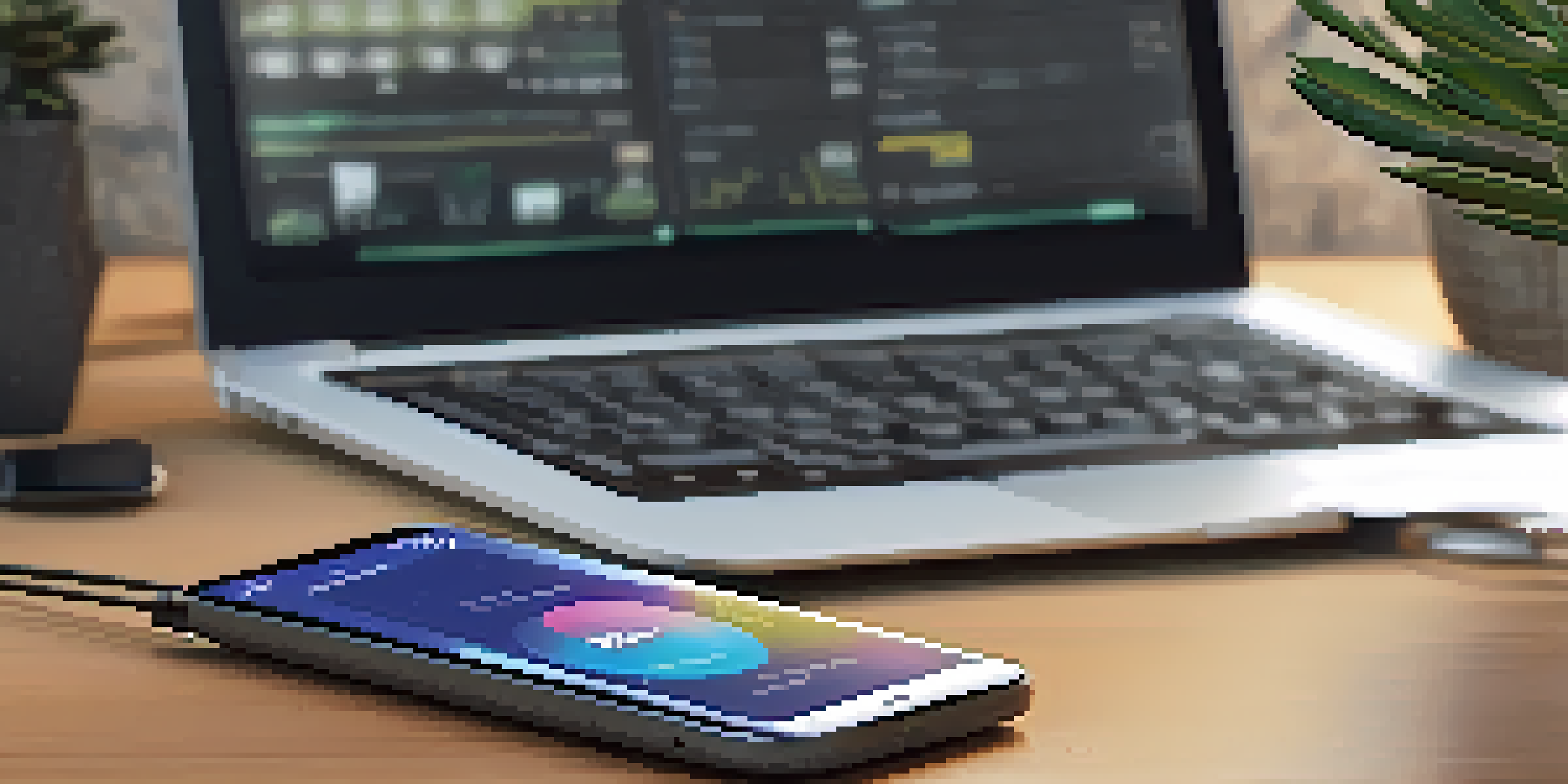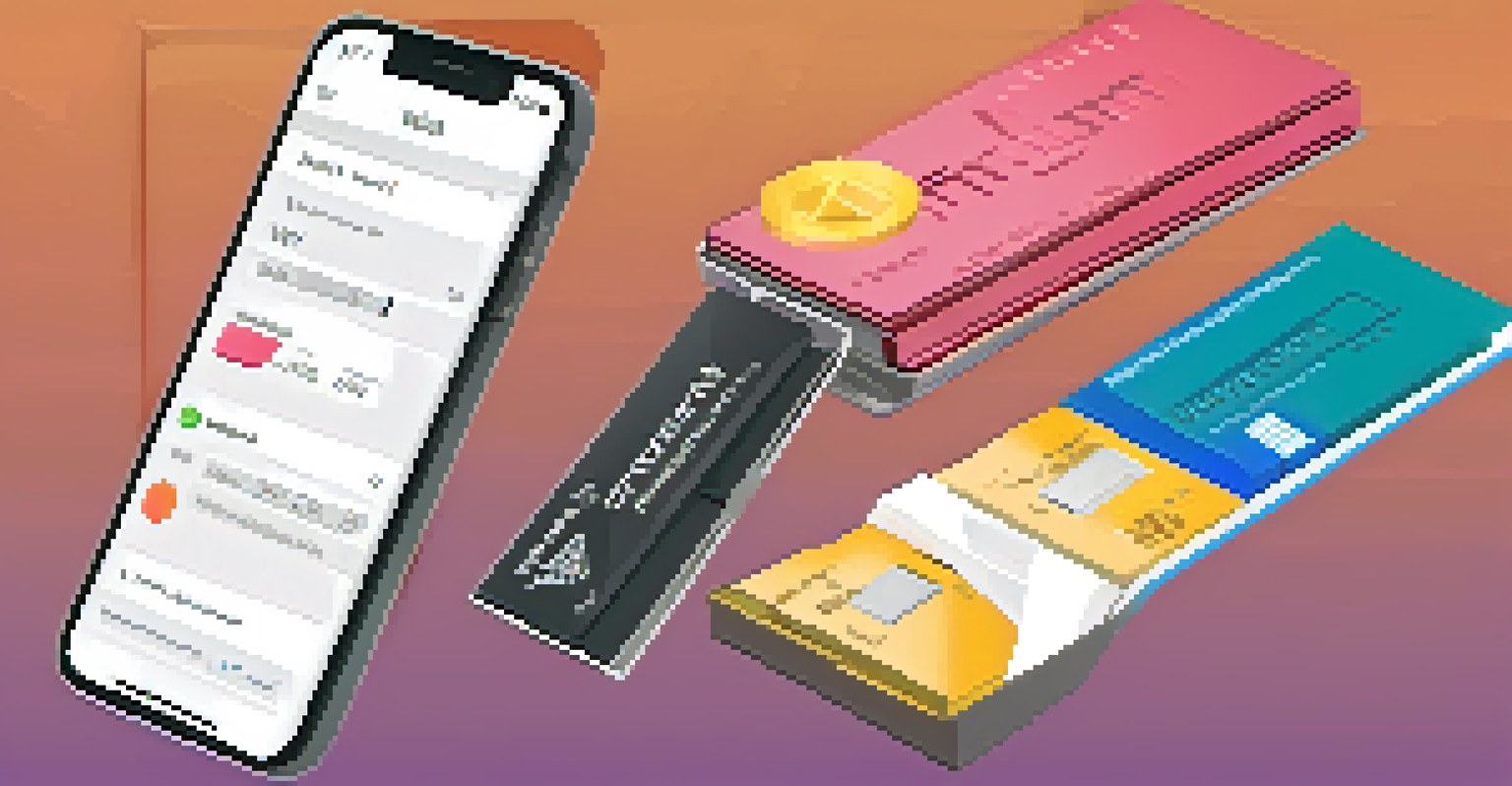A Beginner's Guide to Using Ethereum Wallets Effectively

Understanding What an Ethereum Wallet Is and Its Purpose
An Ethereum wallet is a digital tool that allows you to interact with the Ethereum blockchain. It stores your public and private keys, which are essential for managing your Ether and other tokens. Think of it like a digital bank account where you can send, receive, and keep track of your cryptocurrency.
In the world of cryptocurrency, having a secure wallet is like having a safe deposit box for your valuables.
There are various types of Ethereum wallets, including software wallets, hardware wallets, and paper wallets. Each type has its own advantages and disadvantages, making it important to choose one that aligns with your needs. For instance, hardware wallets offer high security but can be less convenient for daily transactions.
Ultimately, the purpose of your Ethereum wallet is to provide a secure and user-friendly way to manage your cryptocurrency assets. Understanding this foundational concept is the first step towards using your wallet effectively.
Choosing the Right Type of Ethereum Wallet for You
When it comes to Ethereum wallets, one size definitely doesn't fit all. Each type serves different user needs, so it’s crucial to assess your preferences. For example, if you prioritize security, a hardware wallet may be the best fit, while a software wallet could be more suitable for frequent transactions.

Let’s break it down: hardware wallets are physical devices that store your keys offline, making them less vulnerable to hacks. On the other hand, software wallets are applications that can be accessed via your computer or smartphone, offering convenience but potentially exposing you to online threats.
What is an Ethereum Wallet?
An Ethereum wallet is a digital tool for managing your cryptocurrency, storing essential keys for transactions.
Before making a decision, consider factors such as how much Ethereum you plan to hold, how frequently you’ll be making transactions, and your overall comfort with technology. Taking the time to choose the right wallet can save you from headaches down the line.
Setting Up Your Ethereum Wallet: A Step-by-Step Guide
Once you've chosen the right Ethereum wallet, setting it up is the next big step. Most wallets will guide you through the installation process, whether it’s downloading an app or setting up a hardware device. Following the prompts carefully ensures you don’t miss any critical steps.
The best way to predict the future is to create it.
Typically, you’ll start by creating a new wallet, which involves generating a unique seed phrase. This seed phrase acts like a master key to your wallet, allowing you to recover access if you ever lose your device. Be sure to write it down and store it securely—never share it with anyone!
After setting up your wallet, you can now fund it by purchasing Ethereum through an exchange. Once you've done that, you’re ready to dive into the world of cryptocurrency transactions and investments.
Securing Your Ethereum Wallet: Best Practices
Security should always be a top priority when using an Ethereum wallet. Start by enabling two-factor authentication (2FA) if your wallet supports it. This adds an extra layer of protection by requiring a second form of identification before you can access your wallet.
Additionally, avoid using public Wi-Fi when accessing your wallet, as this can expose you to hacking attempts. Instead, opt for a secure, private connection. Regularly updating your wallet software is also crucial, as updates often include important security patches.
Choosing Your Wallet Type
Selecting the right Ethereum wallet depends on your security needs and transaction frequency.
Lastly, be cautious of phishing scams that mimic legitimate services. Always double-check URLs and never click on suspicious links. By following these best practices, you can significantly reduce the risk of losing your funds.
Navigating Transactions: Sending and Receiving Ether
Now that you have a secure Ethereum wallet, it’s time to learn how to send and receive Ether. To send Ether, you’ll need the recipient’s wallet address, which is a long string of characters. It’s like sending an email; just ensure you enter the correct address to avoid any mishaps.
When you initiate a transaction, you’ll also specify the amount of Ether you want to send. Keep in mind that every transaction incurs a gas fee, which is a small amount of Ether paid to miners who validate transactions on the network. It’s essential to check the current gas prices to avoid overpaying.
Receiving Ether is just as straightforward. When someone sends you Ether, you simply provide them with your wallet address. Once the transaction is confirmed on the blockchain, you’ll see the funds reflected in your wallet almost instantly.
Exploring Additional Features of Your Ethereum Wallet
Many Ethereum wallets come with features that go beyond basic transactions, offering added convenience and functionality. For instance, some wallets allow you to swap cryptocurrencies directly within the app, saving you the hassle of using an exchange.
You might also find features such as transaction history, which helps you keep track of your spending and incoming funds. This can be particularly useful for budgeting or monitoring investment performance.
Best Practices for Security
Prioritize security by enabling two-factor authentication and being cautious of phishing scams.
Additionally, some wallets offer access to decentralized applications (dApps) built on the Ethereum blockchain. This opens up a world of possibilities, from lending and borrowing to gaming and NFTs. Exploring these features can enhance your overall experience with Ethereum.
Troubleshooting Common Issues with Ethereum Wallets
Despite your best efforts, you might encounter issues while using your Ethereum wallet. Common problems include forgotten passwords or seed phrases, which can be frustrating. It’s crucial to keep your recovery information stored safely to avoid losing access to your funds.
Another frequent issue is transaction delays. Sometimes, transactions can take longer than expected due to network congestion or low gas fees. In such cases, you may need to wait or consider resending the transaction with a higher fee for faster processing.

If you ever feel overwhelmed, don’t hesitate to consult your wallet's support resources or community forums. Engaging with other users can provide valuable insights and solutions to common problems.